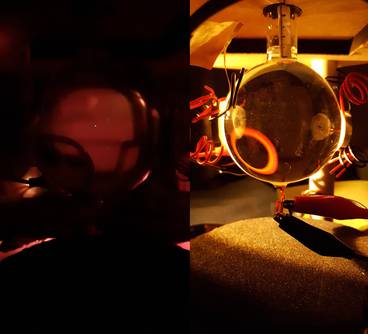Single Bubble Sonoluminescence Experiment Design for Microgravity Conditions (Bubbles)

research area: fluid dynamics
experiment title:
Single Bubble Sonoluminescence Experiment Design for Microgravity Conditions (Bubbles)
experiment acronym: DYT
funding agency:
ESA (Education) / ZARM
grant number:
Drop Your Thesis! - Program
performing organization:
International Space University (ISU), Illkirch-Graffenstaden, France
prime investigator:
Prof. Chris Welch
(James Hurrell, Adam Nawal, Hameed Mohammed)
experiment objective
abstract
The experiment is a study of single bubble sonoluminescence in microgravity. Sonoluminescence is an intriguing phenomenon of creating light from sound, as a result of acoustic cavitation, which is the cycle of growth and collapse of a bubble. At a certain pressure, on collapse, a flash of light is produced. A great deal of experimental and theoretical work has been done in the field yet the source of this flash is a matter of contention. Only one paper has been published on single bubble sonoluminescence in microgravity and general study of cavitation and sonoluminescence in microgravity has so far been limited to parabolic flight experiments. The primary reason for the study is to expand the known conditions required for SBSL. The maximum equilibrium radius of the bubble and driving pressure is limited, it is proposed that in the absence of gravity the bubble stability will improve and allow for higher pressures, larger bubble sizes, and increased light intensity. If this is possible it will allow for improved observation of the phenomena and may aid in the identification of the source of the flash. Furthermore, the phenomenon is very dependent on the environment and the stability of the experiment components used. As such, the high quality of the microgravity environment of a drop tower and the ability to control the ambient environment is ideal for this experiment. So far sonochemistry, ultrasound baths and preventing cavitation damage have been the main areas with commercial applications. The most exciting future prospect has been the potential for so called sonofusion. Whereby it may be possible to use the phenomenon of sonoluminece as an instigation to fusion, due to the high temperatures and pressures expected in the collapse used to fuse nuclei. Prior evidence for sonofusion was published but this has since been refuted. Despite this, there are companies funding research into this prospect. Initially, the team desires to build on previous microgravity studies and perform the first test of SBSL in a drop tower environment known to us. The main scientific objective is then to study the stability of single bubble sonoluminescence at a driving pressure higher than the normal parameter space. Furthermore, measurement of the light intensity will be made in order to make a comparison to the prior parabolic flight and potential future parabolic flights. A secondary objective is to estimate the bubble radius.
related publications
- Single Bubble Sonoluminescence Experiment Design for Microgravity Conditions (Bubbles), Drop Your Thesis! 2019 - Final Report. ESA Human Spaceflight and Exploration, Erasmus Experiment Archive
experiment campaigns
experiment year: 2019
number of drops: 5


 "
"